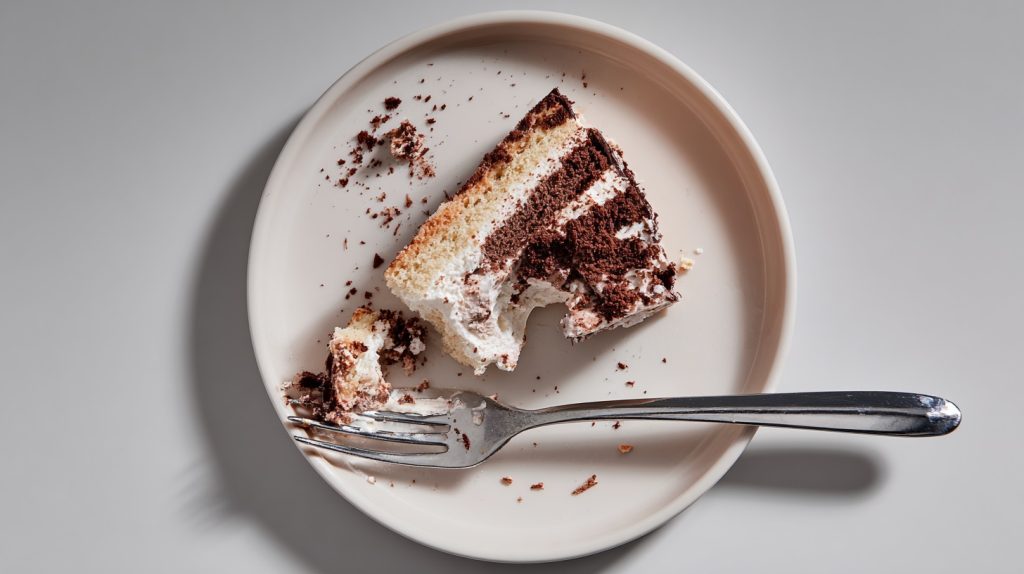Cravings get a bad rap.
We blame them for our slip-ups. We think they’re proof that we’re weak or undisciplined.
But cravings aren’t the enemy. And they definitely aren’t a failure of willpower.
They’re just signals. And when you understand what those signals are saying, you can respond in a way that actually helps.
Here’s what cravings really are – and what to do about them.
Cravings are messages, not failures
A craving is your body or brain trying to get your attention.
Sometimes it’s physical. Maybe you haven’t eaten enough. Maybe your blood sugar is low. Maybe your body needs energy, fast.
Sometimes it’s emotional. You might be stressed, overwhelmed, bored, or anxious – and your brain wants a fast way to feel better.
And sometimes it’s environmental. You saw a donut. Someone mentioned ice cream. You walked past a bakery. Your brain remembered that sugar = pleasure.
None of these things make you bad or broken.
They make you human.
Your biology is part of the picture
Your brain is wired to like sweet, salty, and fatty foods.
These foods trigger reward pathways that tell your brain, “This is good – do it again.”
If you’re tired, stressed, or running on empty, those pathways light up even faster.
This doesn’t mean you have no control. It just means that biology is working in the background.
Knowing that helps you stop blaming yourself – and start working with your body instead of against it.
Restriction makes it worse
Trying to power through cravings by sheer willpower doesn’t usually work for long.
The more you forbid something, the more your brain fixates on it.
Telling yourself you “can’t have sugar” often makes the craving louder, not quieter.
This doesn’t mean you need to eat everything you crave, all the time.
But giving yourself permission to sometimes have what you want – without guilt – can take away the obsessive edge.

Cravings aren’t always about food
Not every craving is a need for food. A lot of the time, it’s a need for something else.
Comfort. Distraction. Connection. A break.
Food might fill the gap temporarily, but it won’t solve the root cause.
If you can pause long enough to ask, “What am I really needing right now?” – you give yourself more options.
Sometimes the answer will still be food. That’s okay.
But sometimes the answer will be something else entirely.
You don’t have to fight cravings
You can respond instead of react.
Notice the craving. Name it. Take a breath.
Ask yourself what kind of craving it is – physical, emotional, or environmental.
Then decide what to do next. You can eat. You can wait. You can go for a walk or call a friend.
The craving doesn’t control you. But you don’t have to fight it either.
Curiosity is more powerful than control
Most of us try to manage cravings by tightening the grip.
But control usually leads to burnout.
Curiosity, on the other hand, opens the door to understanding.
Instead of, “Why can’t I stop eating this?” ask, “What’s making this so hard to resist today?”
Instead of, “I failed again,” ask, “What was going on right before the craving hit?”
Awareness builds freedom.
You’re allowed to eat the thing
One of the most effective ways to reduce cravings is to give yourself unconditional permission to eat.
When you know you can have it, the urgency drops.
Sometimes you’ll still eat the thing. Sometimes you won’t.
But either way, you’re not stuck in a cycle of shame or guilt.
And over time, cravings become just another signal – not a crisis.
Bottom line
Cravings are normal. They’re not a flaw, and they’re not a sign of weakness.
They’re signals from your body, your brain, or your environment.
When you get curious about what they’re really telling you, you can make decisions that actually support you.
Not by fighting harder.
But by understanding more.

